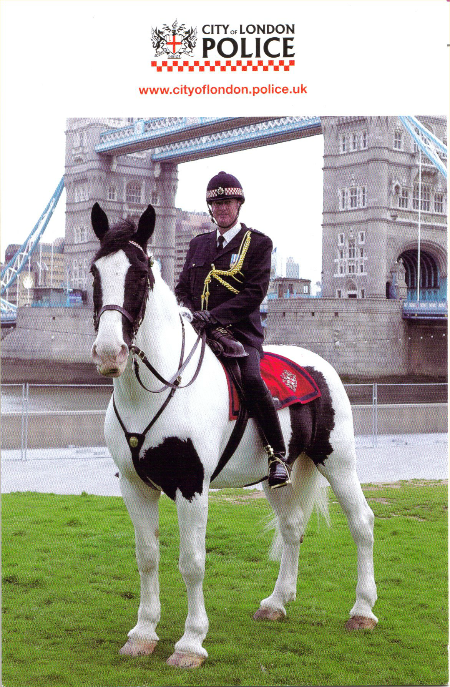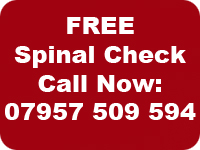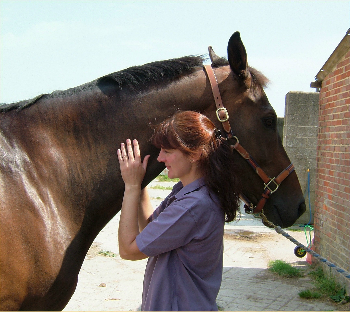 Horses like people can suffer musculo-skeletal problems with pain in their backs, neck and pelvis and limbs.
Horses like people can suffer musculo-skeletal problems with pain in their backs, neck and pelvis and limbs.
Often the horse’s only way of communicating this is to display changes in personality, character or performance. For example your horse may start napping, biting, kicking, rearing, bucking, bolting or stopping at fences. He may have difficulty flexing, bending, engaging his hindquarters or cantering on the correct lead. Often horses which don’t like being tacked up or have a ‘cold’ back are telling you they are sore. If he is a competition horse his performance may suffer causing him to become slower, less supple, knock fences or refuse to jump. He may not stand squarely and his gait may be affected with shortened or uneven strides which often later can lead to lameness.
Misalignments, muscle tension and soreness can cause various symptoms and the horse will often subtly change his gait to compensate for the problem. The joints involved become stiff and lack their normal range of motion. Ligaments will be put under extra strain, muscles will have reduced elasticity and will be more prone to injury. In addition nerves can become inflamed or impinged causing weakness and muscle wasting.
Problems occur in horses for many reasons including the following:
- Trauma & Accidents -falls, road traffic accidents, slipping, stumbling, playing.
- Repetitive activities – rider mounting dfrom the ground on one side, horse pulling back when tied, getting cast, haynets being tied near door or in one corner, being led from one side.
- Competitions - Racing in one direction builds up muscle imbalance and crookedness. Jumping tight turns, jarring. Dressage repetitive
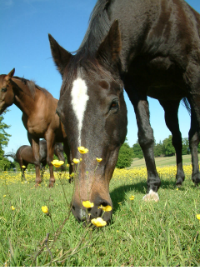 isometric contractions.
isometric contractions. - Foot imbalance
- Surfaces – deep, slippery, hard
- Conformation – straight upright joints are more prone to concussion, long backs are often weaker.
- Dental problems
- Lameness – for example a horse with arthritis or tendon problems can cause the horse to compensate which can develop into secondary areas of soreness and a reduced range of movement.
Appointments for horses will involve taking a full history and the treatment explained. The horse’s gait is analysed and in some circumstances dynamic observation can be videoed and digitally manipulated to show gaits in slow motion. Static assessment is made of the skeleton and muscles of the whole body taking 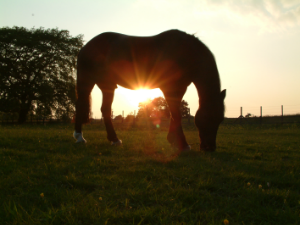 into account asymmetry, joint ranges, misalignments, heat, inflammation and muscle spasm. Susan then uses a unique combination of McTimoney Chiropractic as well as soft tissue and massage techniques to perform a gentle yet effective treatment suitable for almost any horse including youngsters and the older horse. Post treatment and preventative care advice is given before the end of appointment.
into account asymmetry, joint ranges, misalignments, heat, inflammation and muscle spasm. Susan then uses a unique combination of McTimoney Chiropractic as well as soft tissue and massage techniques to perform a gentle yet effective treatment suitable for almost any horse including youngsters and the older horse. Post treatment and preventative care advice is given before the end of appointment.
Current legislation means that animals may only be treated when veterinary consent has been given. Susan works very closely with owners vets and has several who refer directly to her. Where necessary if chiropractic treatment does not seem appropriate an animal will be referred back to your vet for further diagnostics, treatment or surgery.

